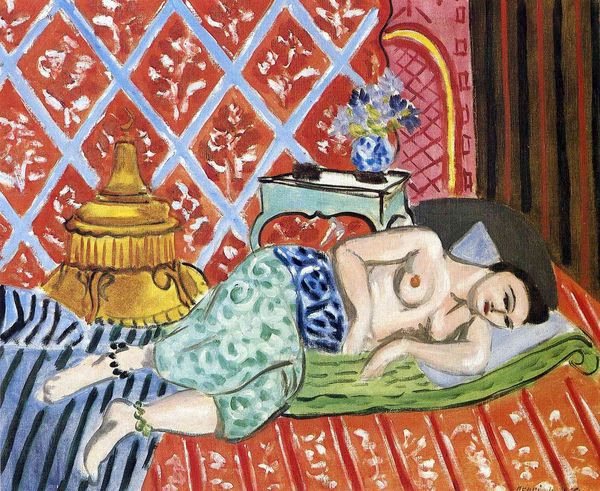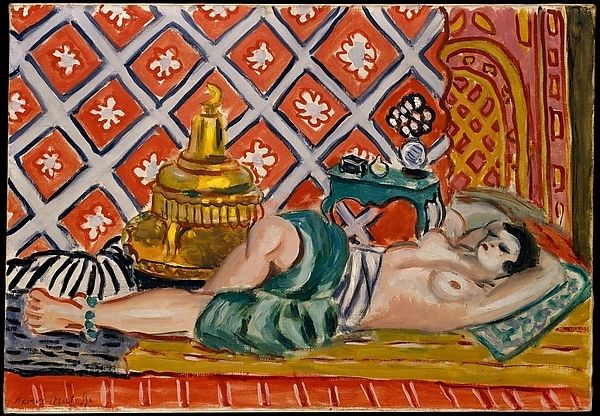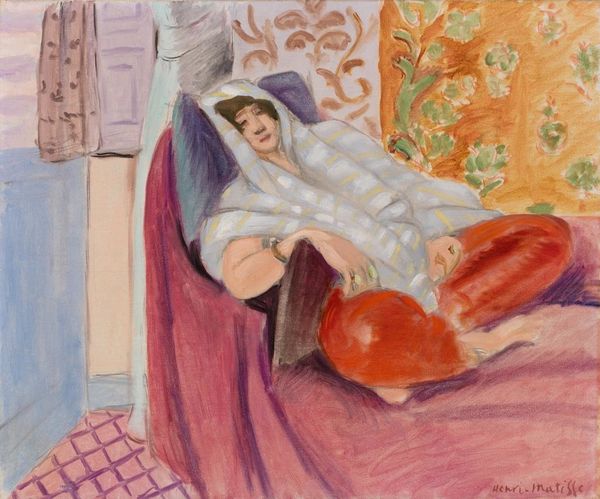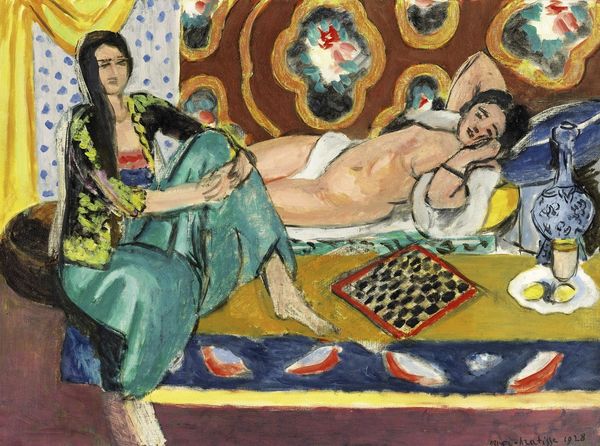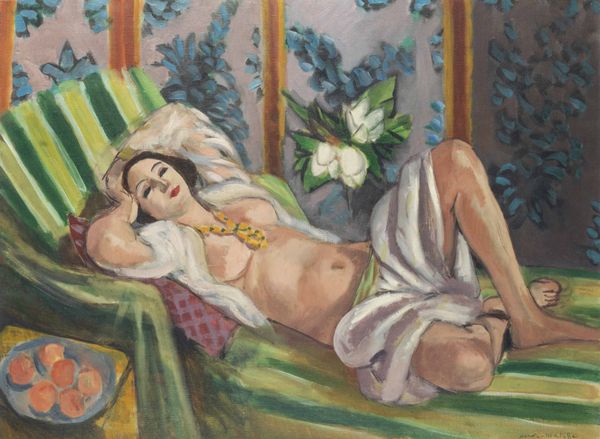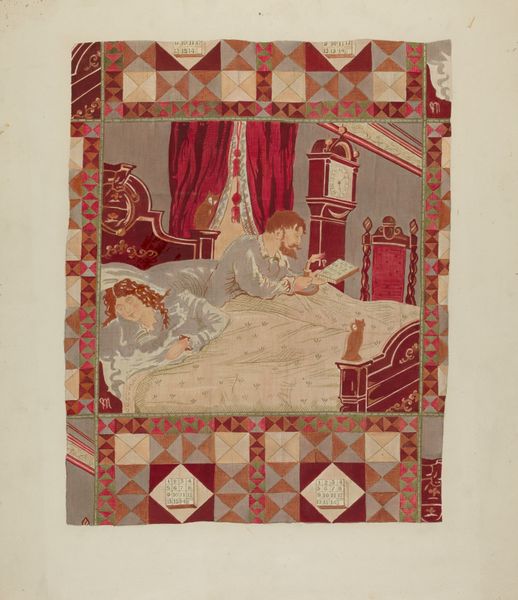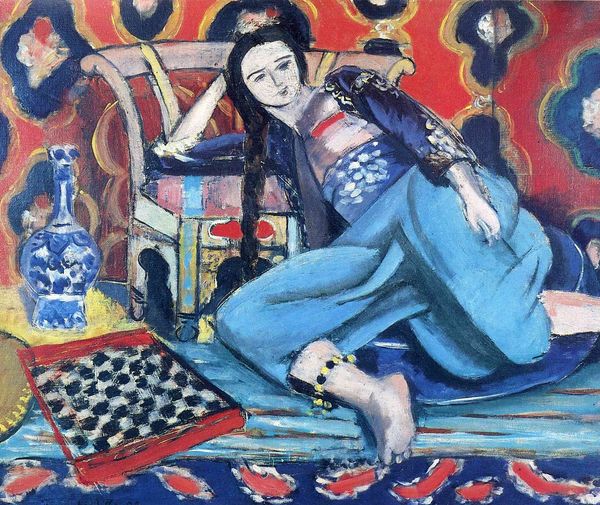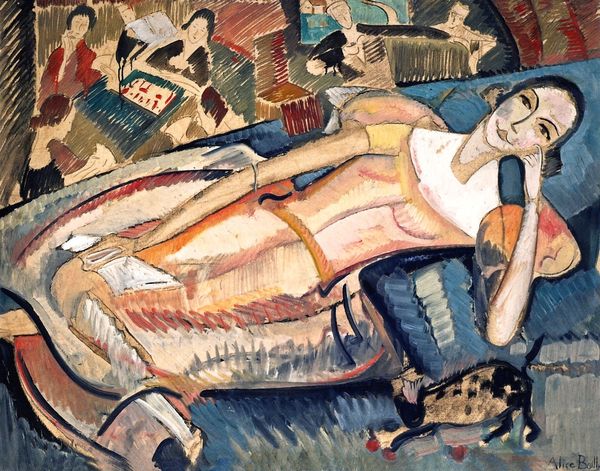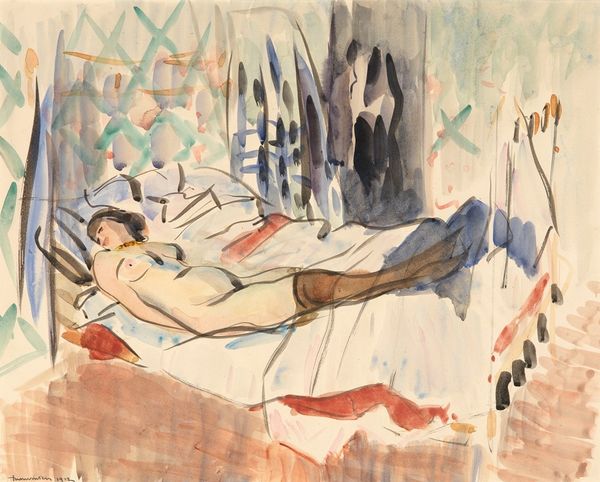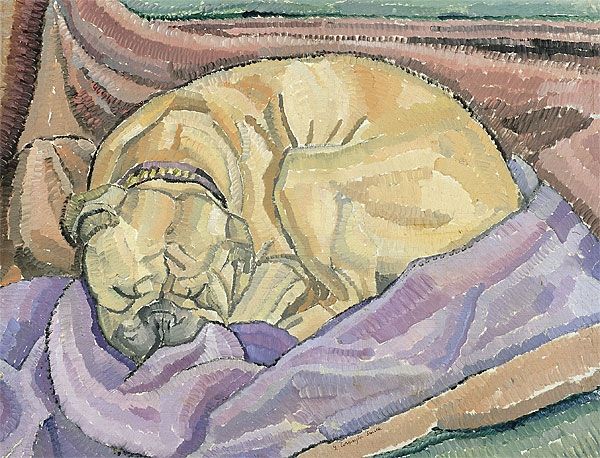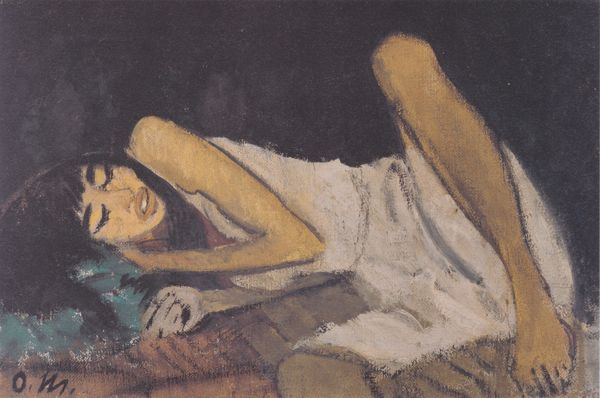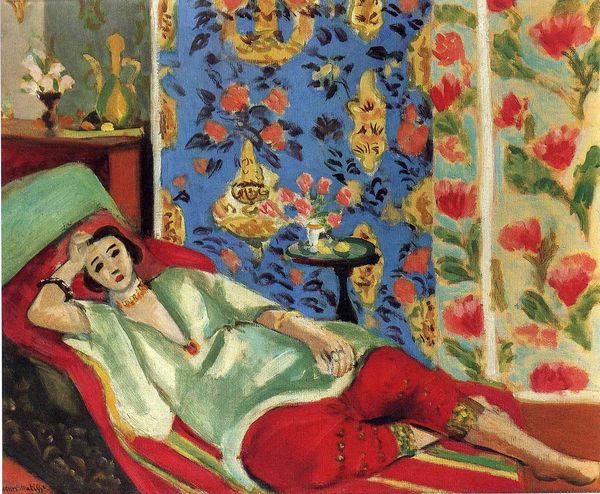
Copyright: Henri Matisse,Fair Use
Editor: So, this is "A Nude Lying on Her Back" by Henri Matisse, created in 1927 using oil paint. It's a visually busy painting, with lots of clashing patterns. I am wondering what to make of that gold pot and the backdrop—What do you see in this piece in terms of the overall cultural landscape of its time? Curator: This work reflects a pivotal moment in the public perception of the female form and the Western gaze in the early 20th century. Notice how Matisse positions the nude within a domestic, almost theatrical space. It’s not just a portrayal of a woman; it's staged for display, inviting viewers into a world that merges private intimacy with public consumption. Editor: The "display" aspect really jumps out, the patterns almost feel like they're part of that "staging". How does this fit with the broader societal trends of that time? Curator: Absolutely. Consider the rising consumer culture of the 1920s, the increasing availability of images through mass media. Matisse is both participating in and commenting on this visual culture. The exotic objects and flattened space nod to the orientalist fantasies popular then. Who had access to these representations, and what did they signify about power dynamics? Editor: So, you're suggesting that it’s not just a simple nude but speaks to things like social status and even power dynamics? Curator: Precisely. We have to consider not just what is being depicted, but how and for whom. Who gets to look, and whose stories are being told? That is a critical question in assessing art’s role. Editor: That adds a whole layer of meaning that I hadn't fully grasped. Thinking about art's public role in this way is really impactful. Curator: Indeed. Seeing art as a reflection of power, allows a deeper interpretation.
Comments
No comments
Be the first to comment and join the conversation on the ultimate creative platform.

